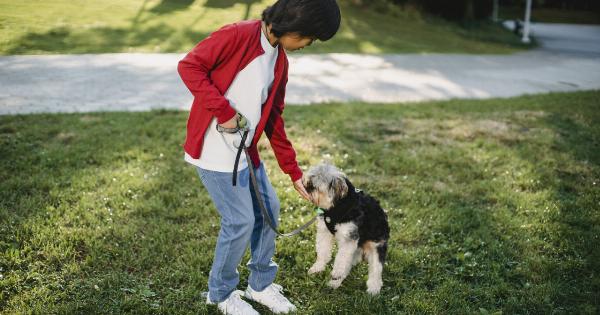For many pets and their owners, a trip to the vet’s office can be a stressful and anxiety-inducing experience.
Whether it’s the unfamiliar smells, the sound of other animals, or the fear of being poked and prodded, pets can experience a range of emotions that can make it difficult for them to feel calm and relaxed during their visit.
Understanding Fear and Anxiety in Pets
Just like humans, pets can experience fear and anxiety in a variety of situations.
Whether it’s encountering a new person, being in an unfamiliar environment, or facing medical procedures, pets can experience a range of emotions that can manifest in physical and behavioral responses.
While some pets may exhibit outward signs of fear and anxiety, such as trembling, panting, or vocalizing, others may become withdrawn or shut down, making it difficult for them to interact with their environment.
Common Causes of Fear and Anxiety at the Vet’s Office
There are a number of factors that can contribute to fear and anxiety in pets when visiting the vet’s office. These may include:.
-
Unfamiliar smells and sounds that can be overwhelming or scary.
-
The presence of other animals, which can be intimidating or threatening.
-
Past negative experiences, such as painful procedures or treatments.
-
The fear of being restrained or held down.
-
Lack of socialization or exposure to new environments.
-
Genetic predisposition to anxiety and fear.
How to Help Your Pet Feel More Comfortable at the Vet’s Office
If your pet is experiencing fear and anxiety at the vet’s office, there are a number of things you can do to help make their visit more comfortable and less stressful. These may include:.
-
Visit the vet’s office for non-medical visits, such as for treats or to say hello, to help your pet feel more comfortable in the environment.
-
Use positive reinforcement, such as treats and praise, to help associate the vet’s office with positive experiences.
-
Bring your pet’s favorite toy or blanket to help them feel more at home in the environment.
-
Ask your vet about using calming pheromones or medications to help reduce your pet’s anxiety during their visit.
-
Consider crate training your pet to help them feel more secure and safe during their visit.
The Importance of Regular Vet Visits
Despite the fear and anxiety that pets may experience during their visits to the vet’s office, it is important to make regular appointments to ensure your pet’s health and wellbeing.
Regular checkups, vaccinations, and preventative care can help catch potential health issues before they become serious, and can also help keep your pet healthy and happy for years to come.
When to Seek Professional Help for Your Pet’s Fear and Anxiety
If your pet’s fear and anxiety at the vet’s office are severe or seem to be getting worse over time, it may be time to seek professional help.
A veterinarian or animal behaviorist can help diagnose anxiety and fear-related disorders in pets and provide appropriate treatment options.
Treatment options may include behavior modification, medication, or a combination of both.
With the right treatment plan and support, many pets can learn to manage their fear and anxiety and feel more comfortable in a variety of situations, including at the vet’s office.
Conclusion
Fear and anxiety at the vet’s office is a common experience for many pets and their owners.
However, there are a number of steps you can take to help make your pet feel more comfortable during their visit, such as creating a positive association with the vet’s office and using positive reinforcement techniques. Regular visits to the vet are also crucial for your pet’s health and wellbeing, so it is important to address any fear and anxiety-related issues as soon as possible.






























